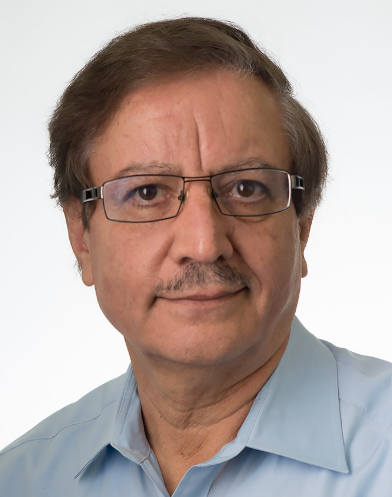The Role of Digital Twins in Semiconductor Manufacturing Control
We are thrilled to kick off our first event of Spring 2025 at Santa Clara University! Our guest speaker, Dr. Abbas Emami-Naeini, will be joining us. See the details below.
ABSTRACT
Digital twin (DT) is a relatively new technology concept with potential to improve semiconductor wafer
processing. Development of this technology has been evolutionary and a direct result of the confluence
of advances in high-performance computing, network communication, optimization techniques, sensing
technologies and the use of vast array of sensors for process monitoring. Potential application of DT
technology to semiconductor equipment includes predictive maintenance, fault detection, performance
evaluation, and chamber matching. Following a discussion of the DT concept, this talk will focus on SC’s
experience with the most challenging aspect of DT technology – development of fast subsystem models
that may be subsequently integrated to create a digital twin of a system. In most cases, these low-order
models have been developed from high-order, high-fidelity physical models whose simulations run too
slow for DT application. SC has an extensive background and experience in using various model-order
reduction techniques to develop such fast models of various semiconductor equipment such as RTP,
plasma etch, CMP, and bake lithography systems. SC has successfully used these models for closed-loop
real time process control, virtual sensing, and chamber matching. Additionally, we describe a couple of
our research projects on non-manufacturing applications that are relevant. In one, a low-order model of
a complex system was developed by combining physics-based modeling with machine learning (deep
neural network, or DNN) so that the user would be warned when changes to the system warranted that
the DNN be retrained. In another project, a complete DT of a large structural system was developed that
is still in operation.
Date and Time
Location
Hosts
Registration
-
 Add Event to Calendar
Add Event to Calendar
Loading virtual attendance info...
- Santa Clara University
- 500 El Camino Real
- Santa Clara, California
- United States 95053
- Building: SCDI
- Room Number: 3116 (Third Floor)
- Click here for Map
- Contact Event Host
- Co-sponsored by
Speakers
Abbas of SC Solutions, Inc.
The Role of Digital Twins in Semiconductor Manufacturing Control
ABSTRACT
Digital twin (DT) is a relatively new technology concept with potential to improve semiconductor wafer
processing. Development of this technology has been evolutionary and a direct result of the confluence
of advances in high-performance computing, network communication, optimization techniques, sensing
technologies and the use of vast array of sensors for process monitoring. Potential application of DT
technology to semiconductor equipment includes predictive maintenance, fault detection, performance
evaluation, and chamber matching. Following a discussion of the DT concept, this talk will focus on SC’s
experience with the most challenging aspect of DT technology – development of fast subsystem models
that may be subsequently integrated to create a digital twin of a system. In most cases, these low-order
models have been developed from high-order, high-fidelity physical models whose simulations run too
slow for DT application. SC has an extensive background and experience in using various model-order
reduction techniques to develop such fast models of various semiconductor equipment such as RTP,
plasma etch, CMP, and bake lithography systems. SC has successfully used these models for closed-loop
real time process control, virtual sensing, and chamber matching. Additionally, we describe a couple of
our research projects on non-manufacturing applications that are relevant. In one, a low-order model of
a complex system was developed by combining physics-based modeling with machine learning (deep
neural network, or DNN) so that the user would be warned when changes to the system warranted that
the DNN be retrained. In another project, a complete DT of a large structural system was developed that
is still in operation.
Biography:
Dr. Abbas Emami-Naeini received his B.E.E. with highest honors from Georgia Institute of
Technology, and his M.S.E.E. and Ph.D. in Electrical Engineering from Stanford
University. He is the Vice President at SC Solutions, Inc. He is an Adjunct Lecturer in
the Electrical Engineering Department at Stanford University. His research has
encompassed multivariable robust control theory and computer-aided algorithms for
control system design. He is the coauthor of the textbook in control theory (with G. F.
Franklin and J. D. Powell), Feedback Control of Dynamic Systems, 8 th Edition, Pearson,
2019. He is the author/co-author of over 100 papers and three US patents.
Email:
Address:SAN JOSE, United States
Agenda
6:00 - 6:30 - Networking and light dinner (for in person attendees)
6:30 - 7:30 - Talk and Q & A
7:30 - 8:00 - Wrap up and Networking
This is a hybrid event. If you plan to attend in person, please register by 03/25/2025 to help us prepare an accurate headcount for food.
Paid parking is available on campus, while free parking can be found off campus.


